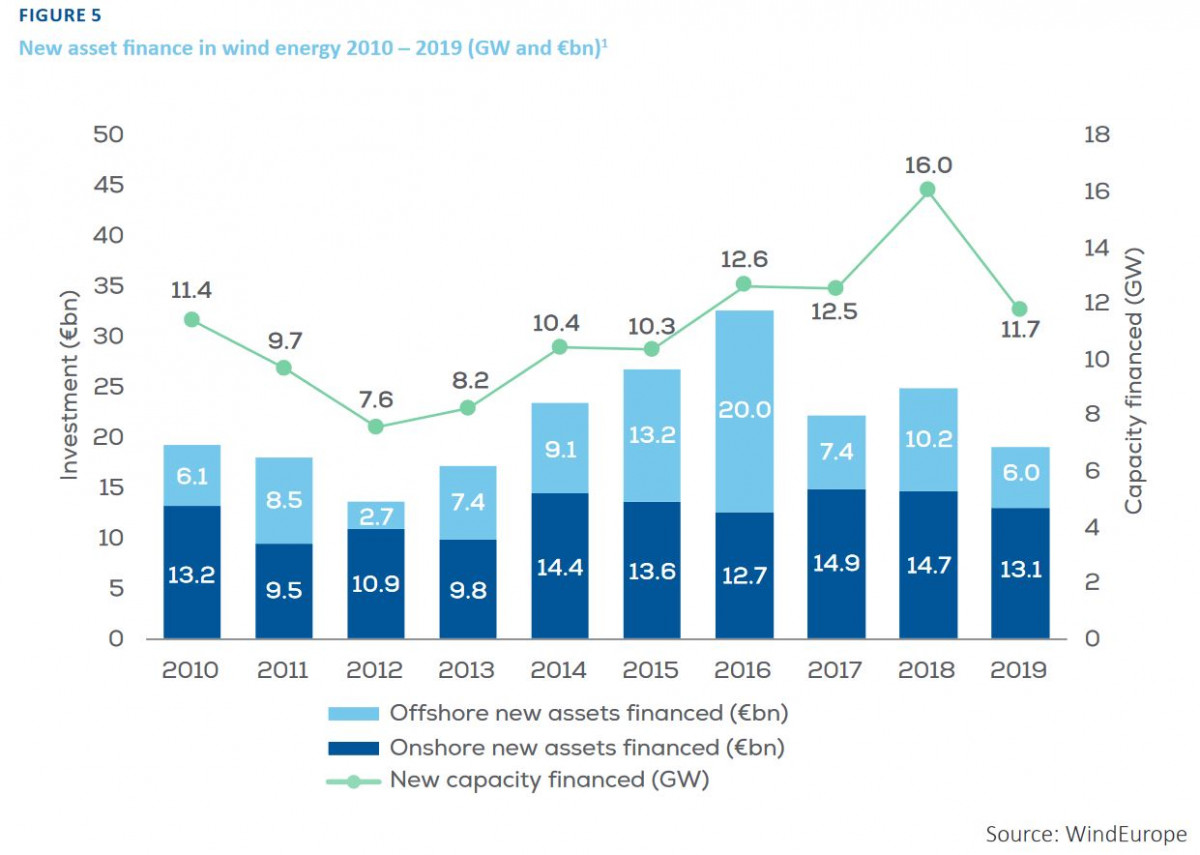German wind power collapse thwarts new European expansion record in 2019
Clean Energy Wire
The slump in wind power expansion in Germany has prevented a new record for investments in the technology in Europe, industry association WindEurope says in an analysis of 2019 financing trends for the renewable power source. "2019 could have been a record year for wind investments in Europe had it not been for a sharp fall in new investments in Germany," the association said. Investments in Germany dropped to 0.3 billion euros from 0.8 billion in 2018 . "The problem in Germany is the permitting process: the rules are too complex and it’s unclear where they’re heading – the government must clarify things to get investors back,” said WindEurope CEO Giles Dickson. Across Europe, investments dropped by nearly 25 percent to 19 billion euros for 11.7 gigawatts (GW) of new wind farm projects, most of them onshore (in 2018: 25 billion euros for 16 GW). A further 33 billion euros in existing projects and about 1.7 GW were financed through so-called power purchase agreements (PPAs). The list was led by Spain with 2.8 billion euros, followed by Sweden and Poland. "Governments and investors continue to have strong appetite for onshore wind, because in most of Europe it is the cheapest form of new power generation capacity," said Dickson. Wind power now accounts for 15 percent of European electricity production and the European Commission aims to bring the share to 50 percent by the middle of the century, he said. According to Dickson, wind power can play an important role in leading Europe out of the expected recession due to the coronavirus outbreak. "Renewable energies and the European Green Deal are the motor for Europe’s recovery. They create growth. They secure jobs. They’re key to our technological leadership towards a climate-neutral economy," he argued.
After leading expansion rankings for several years, onshore wind power growth in Germany dropped to its lowest level in 20 years last year, with construction of thousands of turbines being held up by licensing challenges and lawsuits. Due to the regulatory difficulties, the latest wind power auctions have regularly failed to attract enough bidders. Despite the downward trend in onshore wind power, Germany marked its first ever quarter with more than 50 percent renewables in power production in the first three months of 2020. From January to March, wind, solar and other renewable sources contributed 52 percent to the country's power mix.


